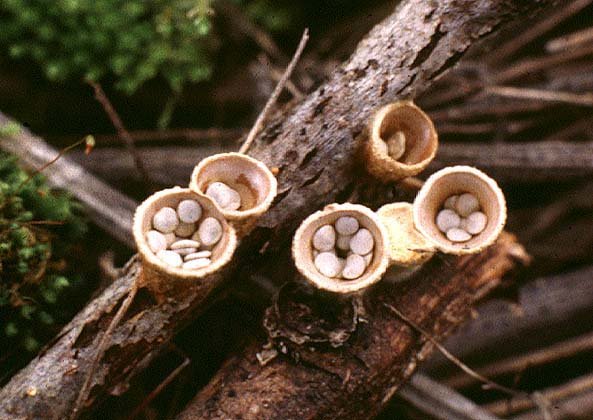Smooth goblet (Crucibulum laeve)
- Division: Basidiomycota (Basidiomycetes)
- Subdivision: Agaricomycotina (Agaricomycetes)
- Class: Agaricomycetes (Agaricomycetes)
- Subclass: Agaricomycetidae (Agaricomycetes)
- Order: Agaricales (Agaric or Lamellar)
- Family: Agaricaceae (Champignon)
- Genus: Crucibulum
- Type: Crucibulum laeve (Smooth goblet)

Photo by: Fred Stevens
Description:
Fruiting body about 0,5-0,8 (1) cm high and about 0,5-0,7 (1) cm in diameter, at first ovoid, barrel-shaped, rounded, closed, hairy, tomentose, closed from above bright ocher, dark -yellow felt film (epiphragm), later the film bends and breaks, the fruiting body is now open cup-shaped or cylindrical, with whitish or grayish flattened small (about 2 mm in size) lenticular, flattened peridioles (spore storage, about 10-15 pieces) at the bottom , inside smooth, silky-shiny, mother-of-pearl along the edge, below pale yellow-ocher, outside from the sides felt, yellowish, later after spraying the spores smooth or wrinkled, brownish-brown
The pulp is dense, elastic, ocher
Spread:
A smooth goblet lives from early July to late October, until frost in deciduous and coniferous forests on rotting branches of deciduous (oak, birch) and coniferous (spruce, pine) species, deadwood and wood immersed in the soil, in gardens, in groups, often. Old last year’s fruits meet in spring









